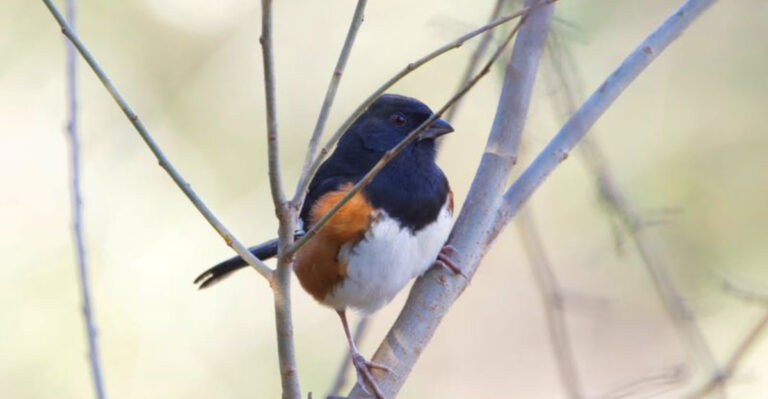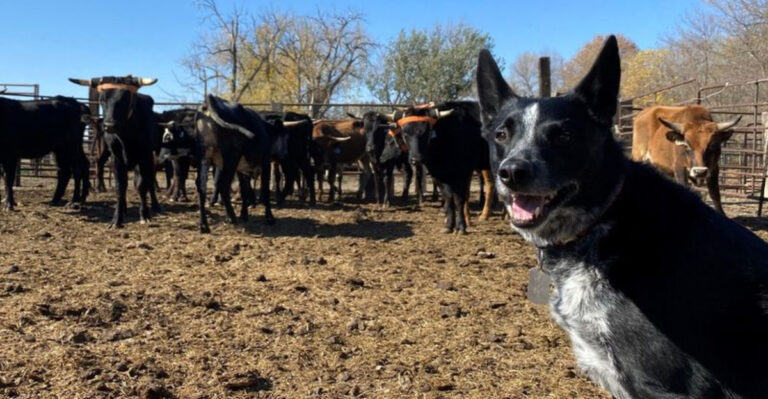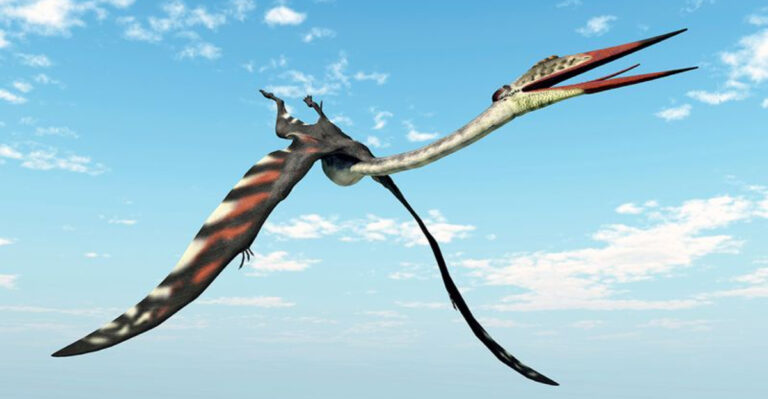10 Interesting Facts About Eastern Tiger Swallowtail Butterflies And Caterpillars
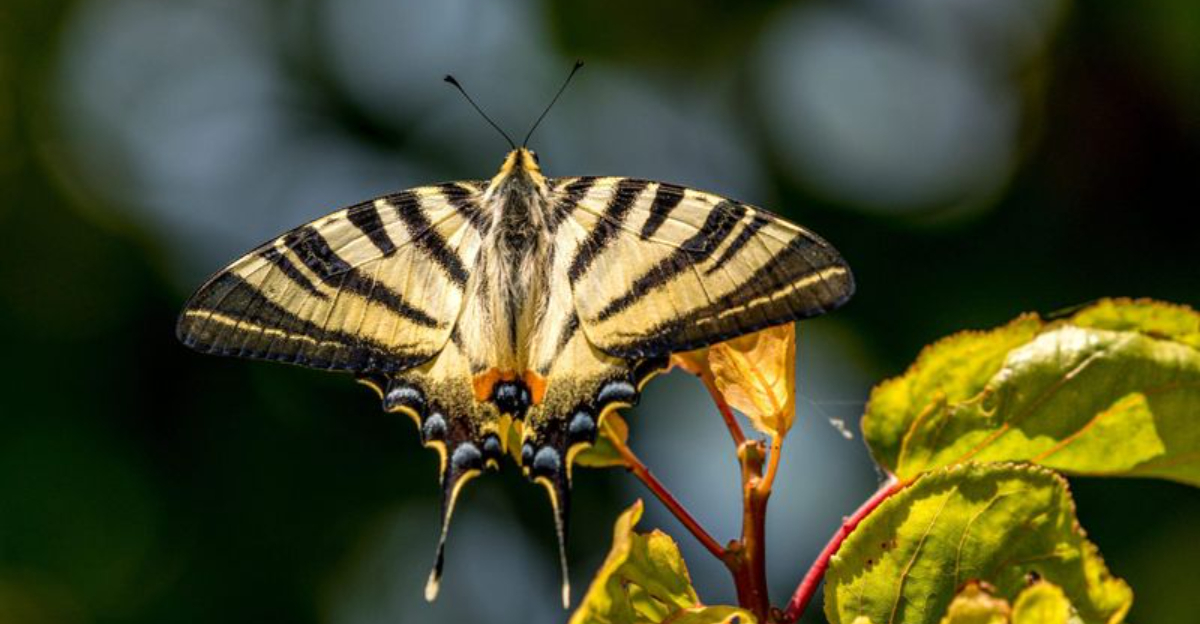
The Eastern Tiger Swallowtail, a captivating creature of nature, enchants with its vibrant hues and graceful flight. This butterfly, with its bold yellow and black stripes, is not just a visual delight but also a symbol of transformation and resilience.
Found predominantly in the eastern regions of North America, the Eastern Tiger Swallowtail has a fascinating life cycle that intrigues both scientists and butterfly enthusiasts alike.
From its beginnings as a tiny egg, through its stages as a voracious caterpillar, and finally emerging as a magnificent butterfly, each phase of its life is a testament to the wonders of nature.
So, let’s explore intriguing facts about these butterflies and caterpillars, shedding light on their habits, habitats, and the unique characteristics that make them a subject of endless fascination.
1. Vibrant Color Palette
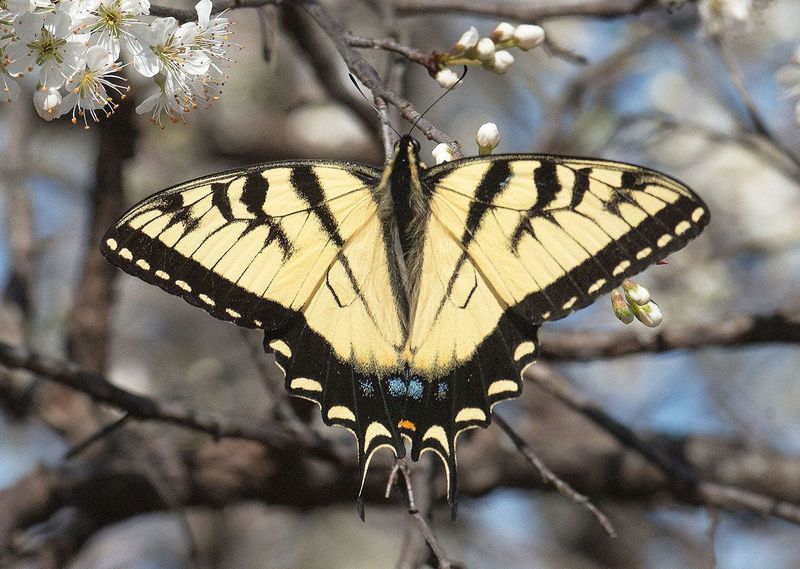
The Eastern Tiger Swallowtail butterfly is renowned for its striking coloration, featuring vibrant yellow wings with bold black tiger-like stripes.
This coloration not only adds to its beauty but serves as a camouflage mechanism, blending with flowers and leaves to evade predators. The underside of their wings is often a soft yellow, dotted with blue and orange spots adding to their visual appeal.
What’s fascinating is the gender-based color variation; females can sometimes be darker, sporting more blue on their hind wings. This variation is a result of mimicry, where they imitate the Pipevine Swallowtail, a distasteful species, to ward off predators.
The male, remaining true to the classic yellow and black, is a frequent visitor to gardens and parks, drawn to flowers for nectar. Their vibrant appearance is not just for show but a critical survival tool in the wild.
Whether fluttering in a garden or resting on a leaf, the Eastern Tiger Swallowtail’s colors tell a story of evolution, adaptation, and survival. This butterfly’s colorful display is a beautiful, living tapestry that continues to captivate nature lovers and photographers alike.
2. Caterpillar Transformation
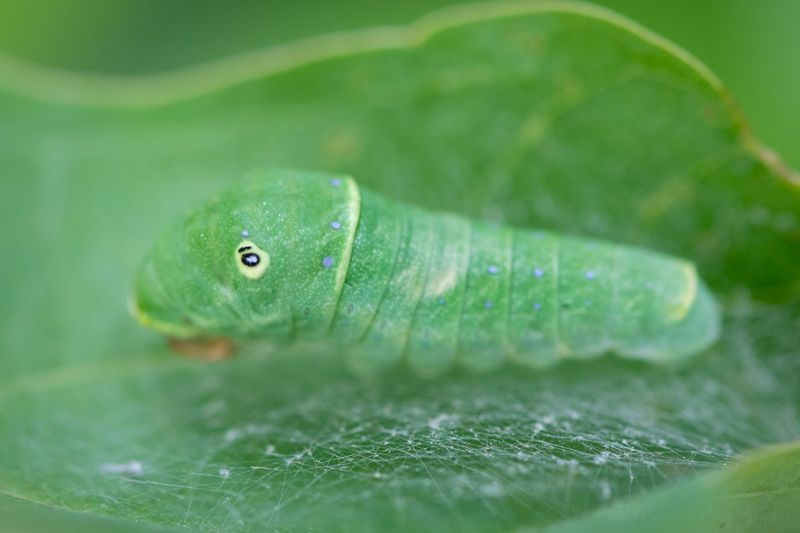
The transformation of the Eastern Tiger Swallowtail from caterpillar to butterfly is a dramatic journey of change. The caterpillar begins life as a tiny hatchling from an egg laid on host plants like wild cherry or tulip trees.
Initially resembling bird droppings, the young caterpillars are well-camouflaged against predators. As they grow, they undergo several molts, shedding skin to accommodate their increasing size.
In their final stage, they become bright green with large eye-like spots, an adaptation that scares off potential predators. These eyespots give the caterpillar a more formidable appearance, mimicking the face of a snake.
During this time, the caterpillar consumes large quantities of leaves, storing energy for its next transformation. The process of metamorphosis culminates in the pupation stage, where the caterpillar forms a chrysalis.
Inside, it undergoes a miraculous change, emerging weeks later as a stunning butterfly. This transformation is not just a biological process but a symbol of growth and change, highlighting nature’s incredible ability to adapt and reinvent.
Observing this metamorphosis can be a magical experience, offering insights into the resilience and complexity of life.
3. Life Cycle Phases
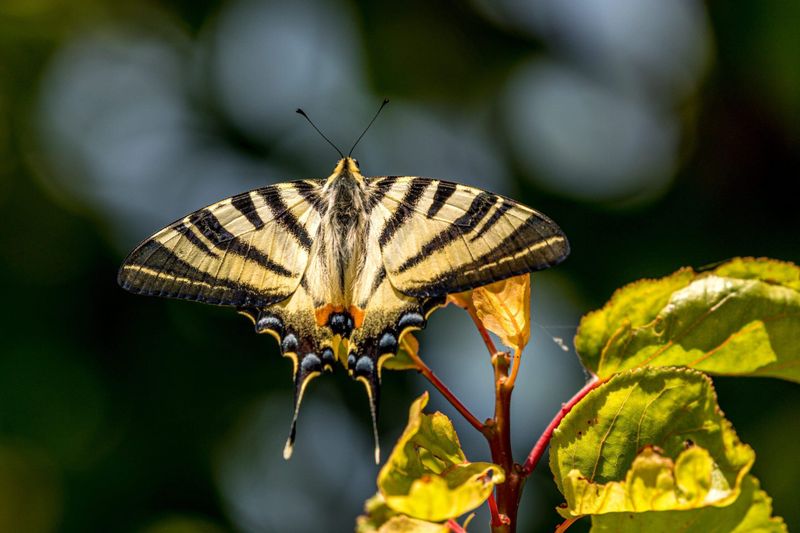
The life cycle of the Eastern Tiger Swallowtail is a complex sequence of stages, each with its own unique characteristics and challenges.
It begins with the laying of eggs, which are small, round, and greenish. These eggs are strategically placed on the leaves of host plants where food is abundant.
The caterpillar hatches from the egg and immediately begins feeding, growing rapidly through a series of molts. Each molt marks a new instar phase, during which the caterpillar changes in size and appearance.
The caterpillar stage is crucial as it accumulates energy for its metamorphosis. Once fully grown, the caterpillar forms a chrysalis, a hard protective casing in which it undergoes transformation. This pupal stage is a marvel of nature, as the caterpillar’s body reconfigures into a butterfly.
After a few weeks, the chrysalis opens, and the adult butterfly emerges, ready to start the cycle anew. This life cycle, from egg to butterfly, is a delicate balance of timing and adaptation, showcasing the intricate dance of life.
4. Habitat Preferences
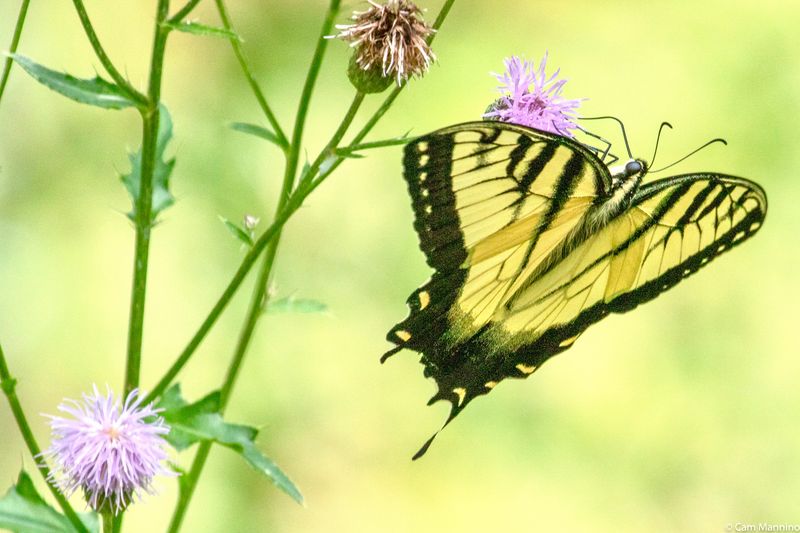
Eastern Tiger Swallowtails are adaptable butterflies that thrive in a variety of habitats, including woodlands, meadows, gardens, and even urban areas. They are particularly fond of areas with ample sunlight, as the warmth aids in their flight and activity.
These butterflies are commonly seen in gardens, where nectar-rich flowers provide a vital food source. The availability of host plants, such as wild cherry and tulip trees, is also crucial for the survival of their caterpillars.
In the wild, Eastern Tiger Swallowtails are often found near rivers and streams, where the humidity and plant diversity create an ideal environment for their lifecycle. Urban gardens and parks can also serve as suitable habitats, provided there are sufficient flowering plants.
Their adaptability allows them to coexist with humans, making them a familiar sight in many areas. Despite their adaptability, habitat destruction and pesticide use pose significant threats to their populations.
Conservation efforts often focus on preserving natural habitats and promoting butterfly-friendly gardening practices. By understanding and supporting their habitat needs, we can help ensure that the Eastern Tiger Swallowtail continues to thrive in diverse environments.
5. Feeding Habits
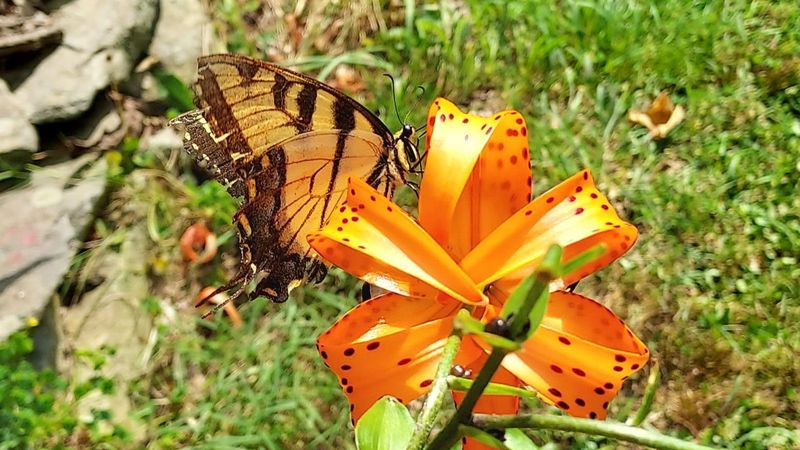
The feeding habits of the Eastern Tiger Swallowtail are as fascinating as their appearance. Adult butterflies primarily feed on nectar, which provides the necessary sugars and nutrients for their energy-intensive lifestyle.
They are often seen flitting from flower to flower, using their long proboscis to extract nectar from deep within blossoms. Their choice of flowers includes those with bright colors and strong scents, such as lilacs, milkweed, and thistles.
These butterflies are also known to partake in mud-puddling, a behavior where they gather on moist ground to extract minerals and salts. This activity is particularly common among males, who need these nutrients for reproduction.
The caterpillars, on the other hand, have a different diet, feeding on the leaves of host plants like wild cherry and tulip trees. This herbivorous diet is essential for their growth and development.
The contrasting diets of caterpillars and adult butterflies highlight their adaptive strategies to different life stages. Understanding these feeding habits can inspire gardeners to plant a variety of nectar and host plants, fostering a healthy environment for these enchanting butterflies.
6. Migration Patterns
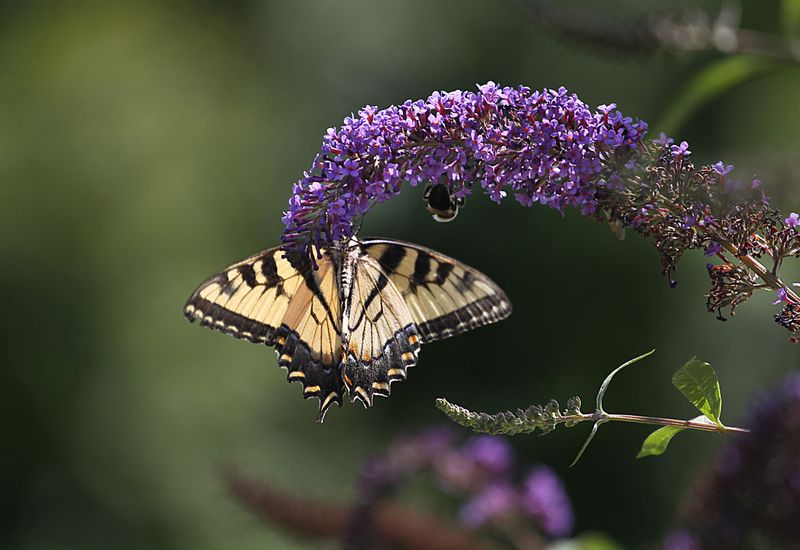
Eastern Tiger Swallowtails exhibit fascinating migratory behavior, though they are not as well-known for long-distance migration as some other butterfly species. These butterflies primarily engage in local movements within their range, which spans from the eastern United States to parts of Canada.
Migration typically occurs as a response to changes in temperature and food availability, ensuring they remain in hospitable climates. During the warmer months, they are more frequently observed in northern regions, while colder months may drive them to seek milder southern climates.
This movement is crucial for their survival, as it allows them to exploit different environments throughout the year. Migration also plays a role in gene flow between populations, contributing to genetic diversity.
While individual butterflies may not travel long distances, their collective movement over generations enables the species to adapt to changing conditions.
Understanding these patterns is essential for conservation efforts, as it highlights the importance of maintaining connected habitats. By supporting migratory corridors and reducing habitat fragmentation, we can help ensure the continued success of the Eastern Tiger Swallowtail in its diverse range.
7. Mating Rituals
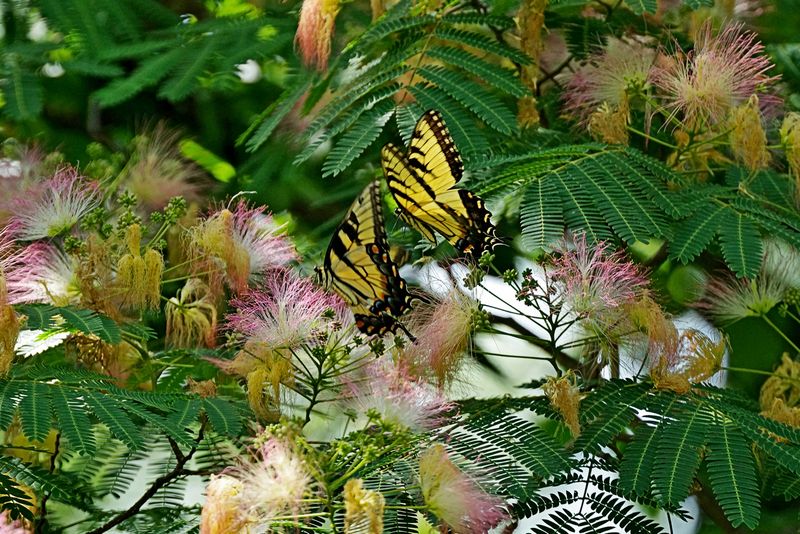
The mating rituals of the Eastern Tiger Swallowtail are a captivating aspect of their natural history. These butterflies engage in a courtship dance, where males display their vibrant colors to attract females. This dance involves intricate flight patterns, showcasing the male’s agility and fitness.
The female, once impressed, will signal her readiness to mate by alighting on a perch, allowing the male to join her. This ritual is not just a display of beauty but an essential part of their reproductive strategy, ensuring the selection of fit and healthy mates.
After mating, the female begins the search for suitable host plants to lay her eggs, continuing the cycle of life. The selection of host plants is crucial, as it influences the survival of the next generation.
Mating and reproduction are vital for the species’ continuity, and these rituals highlight the complex interplay of behavior and environment.
Observing these rituals can provide valuable insights into the natural world, offering a glimpse into the delicate balance of life. By appreciating and protecting their habitats, we can support these beautiful creatures and their fascinating courtship displays.
8. Predators and Defense Mechanisms
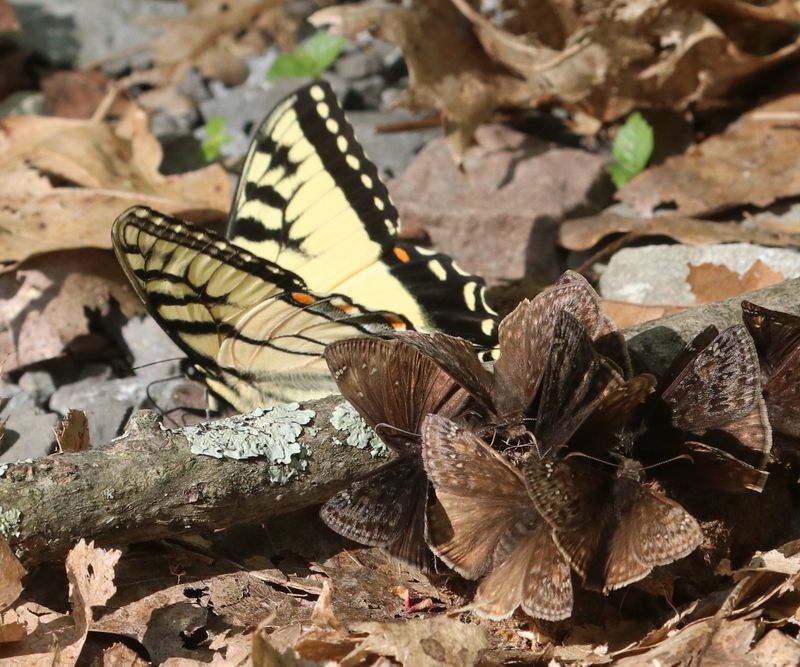
Eastern Tiger Swallowtails, like many butterflies, face numerous predators, including birds, spiders, and wasps. To survive, they have developed a range of defense mechanisms tailored to different life stages. For caterpillars, their primary defense is mimicry.
Young caterpillars resemble bird droppings, providing camouflage against predators. As they mature, they develop striking eyespots that mimic a snake’s head, deterring potential threats.
When threatened, caterpillars also possess an osmeterium, a forked organ that emits a foul-smelling substance to repel attackers. Adult butterflies rely more on their coloration for protection. The bright colors and patterns serve as a warning to predators about their unpalatable nature.
Female Eastern Tiger Swallowtails can mimic the Pipevine Swallowtail, a species known for its toxicity, enhancing their survival odds.
These defense strategies highlight the intricate adaptations that enable survival in the wild. Understanding these mechanisms can inspire conservation actions, such as habitat preservation, to support their natural defenses.
By fostering environments where these butterflies can thrive, we help maintain the ecological balance and ensure the continuation of these remarkable creatures.
9. Cultural Significance
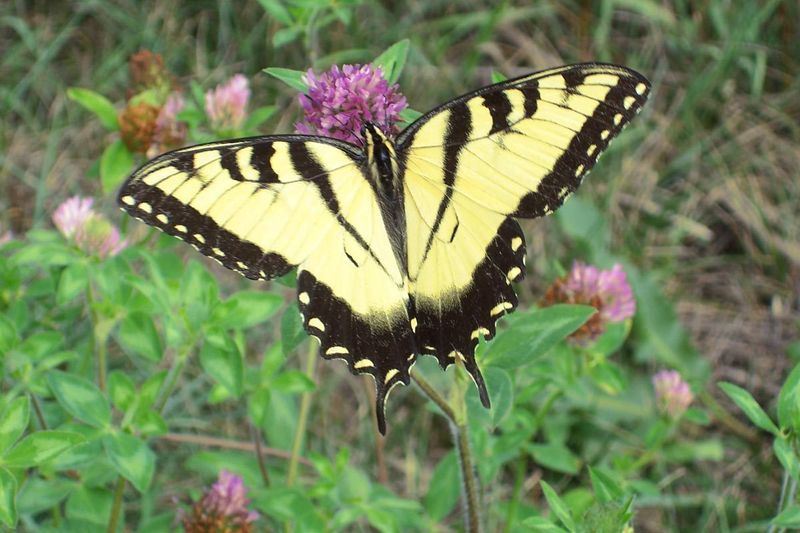
Eastern Tiger Swallowtails hold a special place in cultural history and symbolism. In Native American folklore, butterflies are often seen as symbols of transformation and change, embodying the spirit of renewal and the cycle of life.
The striking beauty of the Eastern Tiger Swallowtail makes it a popular subject in art and literature, where it is often depicted as a representation of grace and beauty.
In gardens across North America, the presence of these butterflies is seen as a sign of a healthy ecosystem, bringing joy and wonder to observers. Their vibrant colors have inspired artists and writers, symbolizing freedom and the ephemeral nature of life.
The butterfly’s life cycle, from egg to adult, resonates with themes of personal growth and transformation, making it a powerful metaphor in storytelling.
By understanding their cultural significance, we can appreciate the deeper connections between these butterflies and human culture.
Celebrating their presence in our environment reminds us of the intricate relationships we share with the natural world and the importance of conserving the habitats that support such beauty.
10. Conservation Efforts
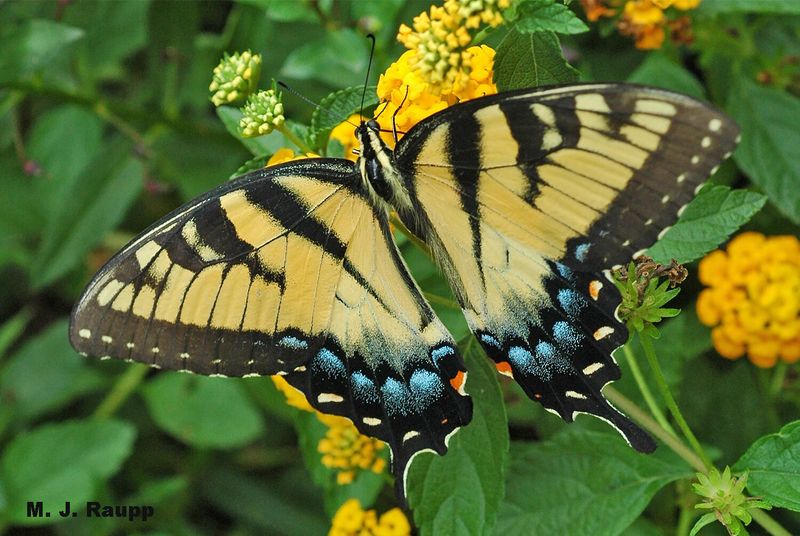
Conservation efforts for the Eastern Tiger Swallowtail are essential to ensure the survival of this beautiful species. Habitat destruction, pesticide use, and climate change pose significant threats to their populations.
To combat these challenges, various initiatives focus on preserving natural habitats and promoting butterfly-friendly gardening practices. Creating gardens with native plants provides essential resources for both caterpillars and adult butterflies, supporting their entire life cycle.
Educating the public about the importance of these butterflies and their ecological roles can foster community involvement in conservation efforts.
Citizen science projects, where individuals contribute to monitoring and data collection, also play a crucial role in understanding population dynamics and threats. Protecting migratory corridors and reducing habitat fragmentation are vital for their continued success.
žThese efforts not only benefit Eastern Tiger Swallowtails but also support broader biodiversity and ecological health. By taking action to conserve their habitats, we contribute to the preservation of a natural heritage that enriches our lives.
Supporting these initiatives ensures that future generations can continue to enjoy the beauty and wonder of these magnificent butterflies.



